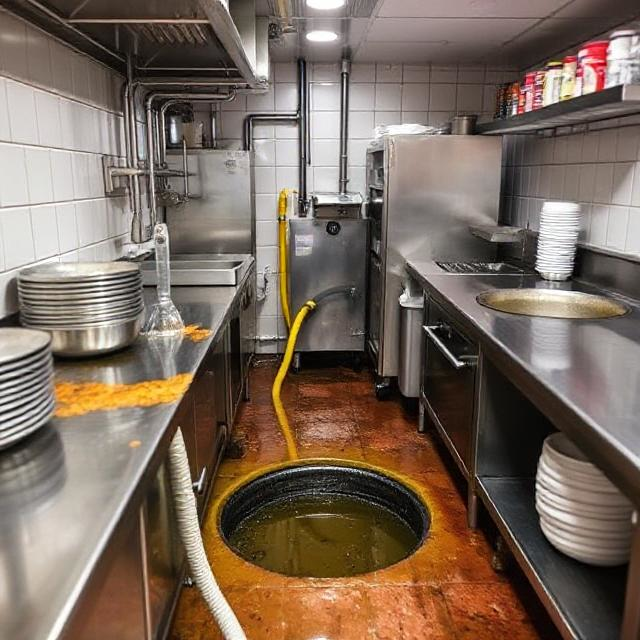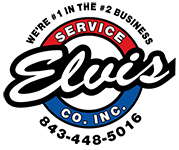
22 Jul The Ultimate Guide to Grease Trap Cleaning & Pumping: Everything Your Business Needs to Know
For any business in the food service industry, from bustling restaurants to cozy cafes, one piece of equipment often operates silently in the background, yet its proper function is absolutely critical: the grease trap. Neglecting this vital component can lead to disastrous consequences, impacting your operations, finances, and even your reputation. This comprehensive guide will serve as your central resource, covering all aspects of grease trap maintenance, why it’s crucial, the difference between cleaning and pumping, regulatory compliance, common problems, and the undeniable benefits of professional service.
Why is Commercial Grease Trap Maintenance So Crucial?
At its core, a grease trap, also known as a grease interceptor, is a plumbing device designed to intercept most FOG (Fats, Oils, and Grease) and solids before they enter a wastewater disposal system. FOG, when cooled, solidifies and adheres to pipe walls, eventually leading to blockages.
Without proper commercial grease trap maintenance, your business faces a cascade of potential issues:
- Clogged Drains and Backups: The most immediate and disruptive consequence. Blocked pipes can lead to sewage backups, foul odors, and even flooding within your premises, causing significant operational downtime and potential health hazards.
- Foul Odors: Accumulated FOG decomposes over time, producing noxious gases that can permeate your establishment, creating an unpleasant environment for both staff and customers.
- Environmental Damage: Untreated FOG discharged into public sewer systems can cause significant environmental harm, polluting waterways and disrupting ecosystems.
- Regulatory Penalties: Local municipalities have strict grease trap regulations to prevent sewer system damage and environmental pollution. Non-compliance can result in hefty fines and legal action.
- Costly Repairs: Beyond regular maintenance, severe FOG buildup can damage your plumbing system, leading to expensive repairs or even complete pipe replacement.
Grease Trap Cleaning vs. Grease Trap Pumping: What’s the Difference?
While often used interchangeably, there’s a distinct difference between grease trap cleaning and grease trap pumping:
- Grease Trap Pumping: This is the process of removing the accumulated FOG, solids, and wastewater from the grease trap. A vacuum truck typically performs this, sucking out the contents into a holding tank for proper disposal at an authorized facility. This is the more common and frequent service.
- Grease Trap Cleaning: This goes a step further than pumping. After the FOG and wastewater are removed, a thorough cleaning involves scraping down the interior walls, baffles, and other components of the grease trap to remove any hardened grease or sludge that adheres to the surfaces. This ensures optimal efficiency and prevents rapid re-accumulation. While pumping is more frequent, a complete cleaning is essential periodically.
Think of it like this: pumping is emptying the trash can, while cleaning is scrubbing it out thoroughly. Both are necessary for a truly hygienic and functional grease trap.
Navigating Grease Trap Regulations and FOG Management
Understanding and adhering to grease trap regulations is paramount for any food service establishment. These regulations vary by municipality but generally focus on:
- Installation Requirements: Specific sizing and design requirements for grease traps based on the volume and type of FOG generated.
- Maintenance Schedules: Mandated frequency for grease trap pumping and grease trap cleaning.
- Disposal Procedures: Strict rules on how pumped FOG waste must be transported and disposed of.
- Record Keeping: Requirements to maintain logs of all maintenance activities, including dates and service providers.
Effective FOG management isn’t just about compliance; it’s about adopting best practices to minimize the amount of FOG entering your grease trap in the first place. This includes:
- Scraping Plates Before Washing: Removing food scraps and grease from dishes before they go into the sink.
- Using Strainers: Placing strainers in sinks to catch solids.
- Proper Disposal of Cooking Oil: Never pouring used cooking oil down the drain. Collect it for proper recycling or disposal.
- Educating Staff: Training employees on proper FOG management practices.
Common Grease Trap Problems and How to Spot Them
Even with regular maintenance, problems can arise. Being aware of the signs can help you address issues before they escalate:
- Slow Drains: A classic indicator of FOG buildup in your pipes or within the grease trap itself.
- Foul Odors: A strong, putrid smell emanating from drains or the grease trap area.
- Water Backups: The most severe sign, indicating a significant blockage.
- Pests: Rodents and insects are attracted to decomposing FOG, so their presence can indicate a problem.
- Gurgling Noises: Unusual sounds from your drains can suggest air pockets forming due to blockages.
The Benefits of Professional Grease Trap Service
While some minor FOG management practices can be handled internally, commercial grease trap maintenance, especially pumping and thorough cleaning, should always be entrusted to professionals. Here’s why:
- Expertise and Equipment: Professional technicians have the specialized equipment (vacuum trucks, hydro-jetting tools) and expertise to efficiently and effectively pump and clean your grease trap.
- Proper Waste Disposal: They are licensed to transport and dispose of FOG waste in compliance with all environmental regulations, saving you from potential legal issues.
- Preventative Maintenance: Regular professional service helps identify potential problems early, preventing costly emergencies.
- Compliance Assurance: Professional companies are up-to-date on all local grease trap regulations, ensuring your business remains compliant.
- Peace of Mind: Knowing your grease trap is properly maintained allows you to focus on running your business without worrying about unexpected plumbing disasters.
- Extended Lifespan of Your System: Regular and thorough grease trap cleaning helps extend the operational life of your entire plumbing and grease trap system.
Conclusion
Effective FOG management and diligent commercial grease trap maintenance are not merely suggestions; they are essential pillars for the smooth, compliant, and profitable operation of any food service business. Understanding the difference between grease trap pumping and grease trap cleaning, adhering to grease trap regulations, and recognizing the signs of common problems will empower you to make informed decisions. By partnering with a reputable professional service, you can ensure your grease trap functions optimally, protecting your business from costly disruptions, environmental harm, and regulatory penalties. Don’t let your grease trap be an afterthought – make it a priority for a cleaner, safer, and more efficient operation.


Sorry, the comment form is closed at this time.